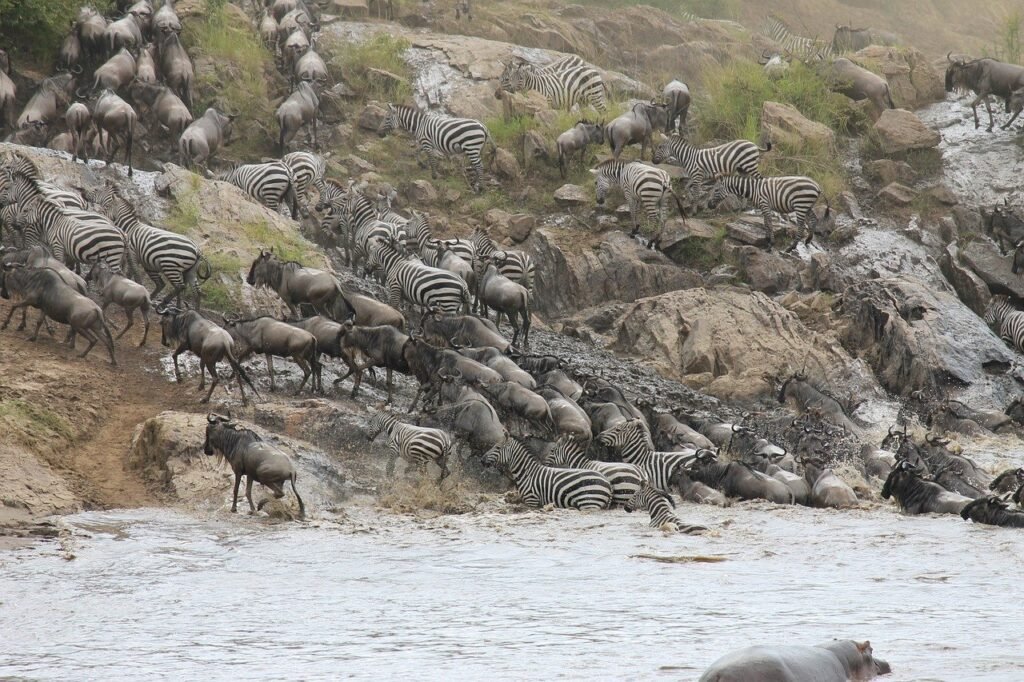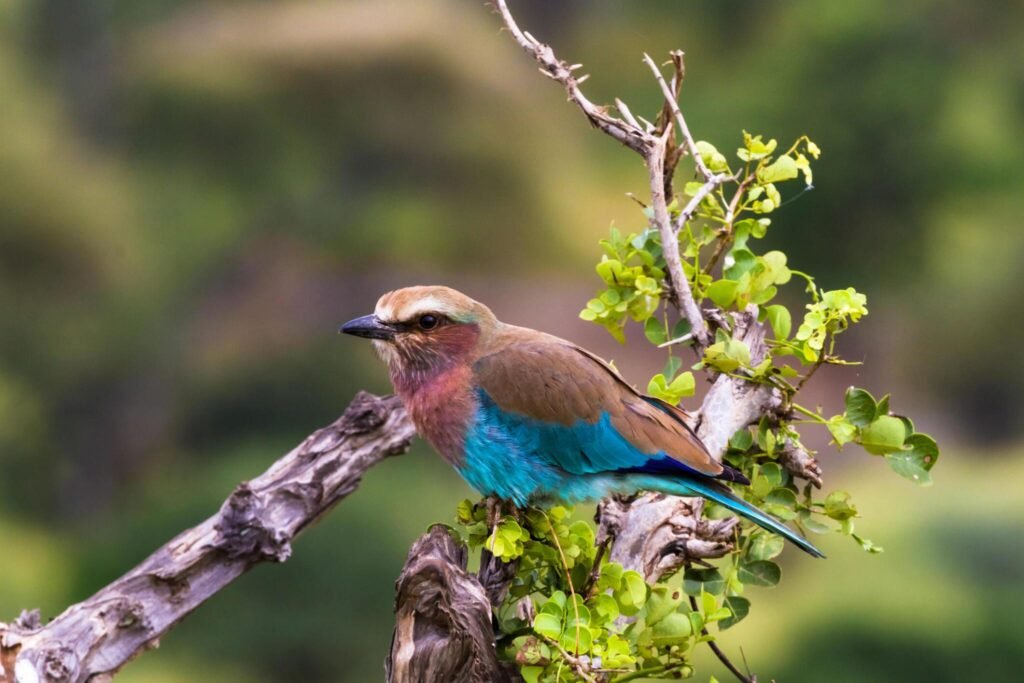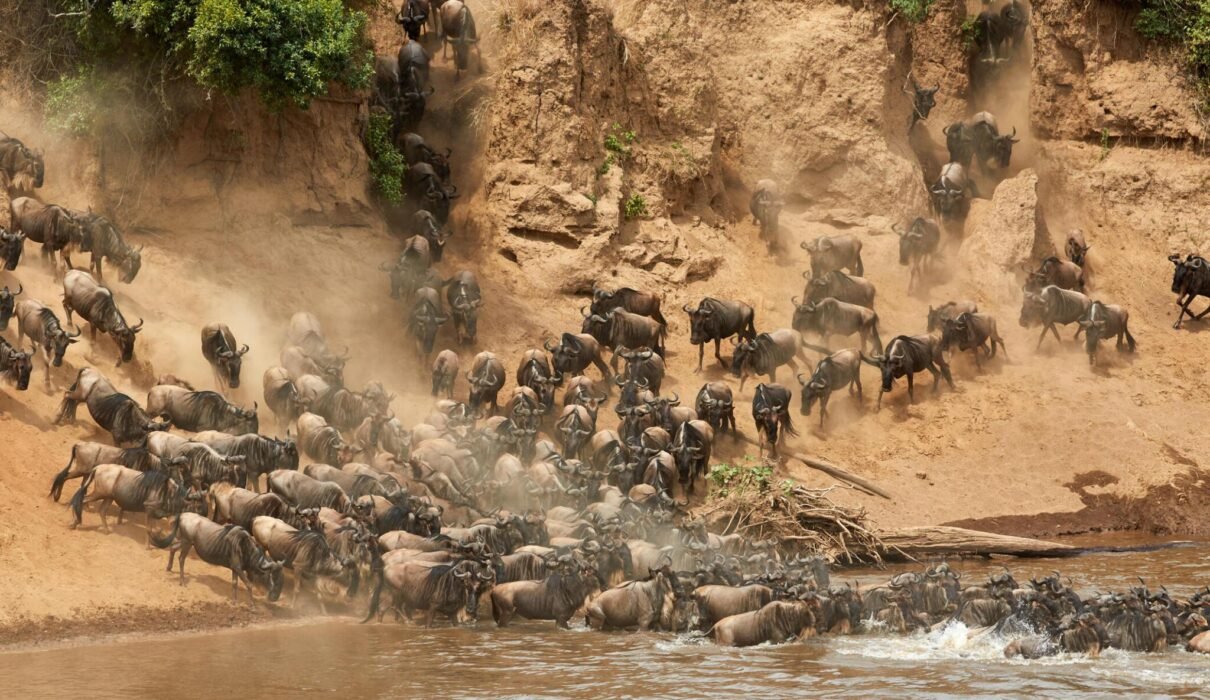Climate and Weather in Serengeti National Park . Serengeti National Park, one of Africa’s most famous wildlife destinations, offers visitors breathtaking landscapes and an incredible diversity of wildlife. Understanding the climate and weather patterns of the Serengeti is crucial for planning your safari. Whether you’re hoping to witness the Great Migration or explore the park’s stunning ecosystems, knowing the best time to visit can make all the difference. In this guide, we’ll provide a detailed look at the climate and weather in Serengeti National Park and tips on when to visit for the best safari experience.
Plan your Serengeti adventure with expert advice.

Climate and Weather in Serengeti National Park : Overview of Serengeti’s Climate and Weather Patterns
Serengeti National Park has a tropical climate that varies depending on the season and altitude. The park’s weather is generally warm throughout the year, but rainfall and temperatures shift across the dry and wet seasons. Serengeti’s climate is split into two distinct seasons:
- Dry Season (June to October): Characterized by little to no rainfall, making it easier to spot wildlife as animals gather around water sources.
- Wet Season (November to May): Divided into short rains (November-December) and long rains (March-May), the landscape becomes lush, and birdwatching opportunities improve.
Learn more about Tanzania’s diverse climate here.
Climate and Weather in Serengeti National Park – Dry Season: The Best Time for Wildlife Viewing (June to October)
The dry season, from June to October, is widely regarded as the best time to visit Serengeti National Park. During these months, the grass is shorter, making it easier to spot wildlife like lions, elephants, and the Great Migration of wildebeests and zebras.
Why Visit During the Dry Season?
- Ideal for Wildlife Viewing: With scarce water, animals gather around rivers and waterholes, increasing your chances of spotting large herds and predators.
- Clear Skies: Expect sunny days with minimal rain and beautiful, clear skies, perfect for photography.
- Comfortable Temperatures: Daytime temperatures range from 24°C to 28°C (75°F to 82°F), while nights can be cooler at around 14°C to 18°C (57°F to 64°F).
Discover more about the best times for wildlife viewing in Serengeti.
Climate and Weather in Serengeti National Park – Wet Season: A Lush, Green Paradise (November to May)
From November to May, Serengeti enters its rainy season, transforming the landscape into a lush green paradise. While the rains can make some areas more difficult to access, this period offers unique opportunities for birdwatchers, as migratory birds flock to the region.
Short Rains (November to December)
- Great for Birdwatching: With the arrival of migratory birds, this is an ideal time for bird enthusiasts to spot over 500 species.
- Fewer Tourists: The park is less crowded, providing a quieter, more intimate safari experience.
Long Rains (March to May)
- Heavy Rains: March through May brings the most rainfall, often making some roads muddy and harder to navigate.
- Pros: Despite the rains, the park is teeming with wildlife, and the green scenery is beautiful. This period also offers some of the best safari deals.
Read more about the benefits of visiting Serengeti during the rainy season.
Climate and Weather in Serengeti National Park – Temperature Ranges in Serengeti National Park
Temperatures in Serengeti are warm year-round, with variations between day and night. The park’s higher altitude areas are cooler, particularly in the evenings. Here’s a breakdown of the typical temperature ranges:
- Daytime Temperatures: Range from 24°C to 29°C (75°F to 84°F).
- Nighttime Temperatures: Can drop to 14°C to 18°C (57°F to 64°F), especially from June to October.
- Altitude Variations: Higher areas of the park, such as the Ngorongoro Highlands, experience cooler temperatures compared to the central Serengeti plains.
Explore more about Serengeti’s temperature and climate conditions.
Climate and Weather in Serengeti National Park – Best Time to Witness the Great Migration
The Great Migration is one of the most incredible wildlife events in the world, where over 1.5 million wildebeest and 200,000 zebras migrate across the Serengeti in search of fresh grazing grounds. While this migration happens throughout the year, certain months are better for witnessing specific parts of the migration:
- June to July: The wildebeests begin their journey northward, gathering in the western corridor and preparing to cross the Grumeti River.
- August to September: The famous Mara River crossings take place in the northern Serengeti, a thrilling spectacle as wildebeest navigate crocodile-infested waters.
- January to March: Calving season in the southern Serengeti and Ndutu Plains, where over 8,000 wildebeest calves are born daily.
Learn more about the Great Migration and its timeline.
Climate and Weather in Serengeti National Park – Birdwatching: November to April
If you’re a bird lover, the best time to visit Serengeti for birdwatching is during the rainy season, from November to April. This is when migratory bird species from Europe and Asia join the resident birds, bringing the total number of bird species in Serengeti to over 500.
- Common Species: Flamingos, Kori bustards, secretary birds, and numerous raptors.
- Ideal Locations: The central Serengeti and the Ndutu area are great spots for birdwatching, with wetlands and seasonal lakes attracting waterbirds.
Explore more about birdwatching in Tanzania.

Serengeti’s Rainy Season: Pros and Cons
While the rainy season from March to May may deter some travelers, it has its advantages. The rain turns the park into a vibrant, green oasis, and there are fewer tourists, offering a more peaceful experience. However, it’s important to be aware of the challenges that come with this season:
Pros:
- Lush Landscapes: The park’s scenery is at its most beautiful, with vibrant greenery.
- Lower Prices: Off-season rates for accommodations and safaris make this an affordable time to visit.
- Great for Birdwatching: Migratory birds make their appearance, adding to the diversity of wildlife.
Cons:
- Road Conditions: Some roads can become muddy and difficult to traverse.
- Limited Wildlife Visibility: The thick vegetation can make it harder to spot wildlife compared to the dry season.
Learn more about Serengeti’s rainy season and what to expect.
Packing Tips for Your Serengeti Safari
No matter when you visit Serengeti, packing the right gear is essential. The weather can change quickly, especially between day and night. Here are some packing tips based on the season:
- Dry Season: Bring lightweight clothing for daytime, but don’t forget warm layers for the cooler nights.
- Rainy Season: Pack waterproof gear, including a good rain jacket and sturdy hiking boots to handle muddy conditions.
- Year-Round Essentials: Sunscreen, hats, binoculars, and insect repellent are must-haves.
Check out a full packing list for your Serengeti safari.
Fewer Crowds: Visiting During the Shoulder Seasons
For those who prefer fewer crowds, visiting Serengeti during the shoulder months of November and February can offer the best of both worlds. These months fall between the high and low seasons, offering pleasant weather, good wildlife viewing, and lower visitor numbers.
- Why Shoulder Seasons?: These months still offer excellent safari conditions without the peak-season crowds, allowing for a more peaceful experience.
- Affordable Travel: Shoulder seasons often come with lower prices on accommodation and safari tours.
Find out more about the best times to avoid crowds in Serengeti.
Climate and Weather in Serengeti National Park : Conclusion
Serengeti National Park’s climate and weather offer something unique no matter when you visit. From the vibrant, green landscapes of the rainy season to the clear skies and wildlife abundance of the dry season, understanding the park’s climate will help you plan the perfect safari. Whether you’re after the best wildlife viewing, birdwatching, or just an unforgettable safari experience, Serengeti delivers all year long.
For more information on planning your Serengeti safari, visit Kilimanjaro Climb Specialist or Eddy Tours & Safaris.

